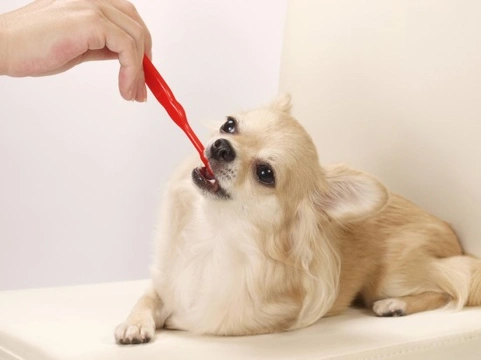
How to tell if your dog has dental problems
Canine tooth brushing is something that is highly recommended by veterinary surgeons, in order to avoid dental problems developing in later life. However, not all dog owners are fully on board with this yet, and if you buy or adopt an adult dog or even if you have had your own adult dog since they were a puppy, it is more likely than not that they are not used to having their teeth cleaned!
Even if you do follow a strict routine of canine tooth cleaning, your dog might still potentially develop dental issues as they get older, and there are some dental problems that tooth cleaning simply cannot prevent. It is important for all dog owners to be aware of the signs and symptoms of potential problems with the teeth or dental discomfort in the dog, as these can be painful and uncomfortable, and potentially lead to problems that are more serious.
Read on to learn about the most obvious indications that your dog has dental problems.
Bad breath
Dogs have a certain and very distinctive doggy smell, but their breath should not be rancid! It will never smell minty fresh, and if your dog has just eaten, it will probably smell of their last meal. However, if your dog’s breath is terrible and you can smell it when they open their mouths, if you find that your skin or clothes smell when your dog licks you, or if it smells rotten, the chances are that their teeth are in bad condition.
Dropping food
When your dog is eating, dental problems may become apparent in any one of a variety of ways, all of which you should be on the lookout for. If your dog repeatedly takes a mouthful of food but some of it drops back out of their mouth, this can indicate bad teeth or pain when eating, which requires investigation.
Eating delicately
Dogs are usually very enthusiastic about their food, and it is unusual to see a dog eating delicately. Assuming that the size of their chunks of food are appropriate for the size of the dog and do not present problems of their own, if your dog appears to eat very delicately, picking up one piece of food at time and taking some time to chew it, they may be having issues with their teeth.
Slobbering excessively when eating
Some dogs are big droolers, and tend to slobber a lot regardless of what they are doing! Dogs with droopy upper lips, such as the Boxer dog and the Bassett Hound are particularly prone to this, and if your dog slobbers a lot most of the time, there is probably not a problem.
However, if your dog does not tend to drool unduly at other times but appears to slobber a lot or produce excess saliva only when eating, this is worth getting checked out by the vet.
Chewing on one side of the mouth
If you have a bad tooth or an area of your mouth that is causing you pain, the chances are that you will avoid chewing on it or biting down on that tooth, as this will likely prove very uncomfortable! The same is true for your dog, so if your dog always seems to chew on one side of their mouth and actively avoids chewing in a certain area, there might well be a problem in this area that is causing them pain, such as an abscess or a rotten tooth.
Difficulty eating kibble
While kibble or hard food is generally considered to be better for dental health than wet food, if your dog’s teeth are rotten or sore or their gums are inflamed and painful, eating kibble can be a challenge. Kibble is of course hard, which has something of a cleaning action on the teeth, while the moisture in wet food will stick to the teeth more and can advance decay. However, if your dog is unenthusiastic about kibble and appears to eat it very delicately or slowly, or swallow whole chunks of it without chewing but doesn’t show the same behaviours with wet food, their teeth may be causing them pain.
Going off their food
If your dog loses their enthusiasm over their food in general and seems reluctant to eat, this can be indicative of a huge variety of issues as well as dental problems, such as a different type of illness, or even that your dog has already filled up by eating elsewhere! However, dental problems and dental pain are conditions that it is important to consider if your dog goes off their food, as eating might prove to provide more pain than pleasure if their teeth are not in good condition.
Visible indicators when inspecting the teeth
Inspecting your dog’s teeth for the signs of dental problems can be a challenge, and without a veterinary examination, it can be easy to miss things. By all means inspect your dog’s own teeth for the signs of obvious problems, but don’t forget that just because you cannot see anything amiss doesn’t mean that there is no issue.
Sore, inflamed gums, excessive plaque, loose, rotting or missing teeth, sore spots, lumps or abscesses are all problems that will require help from your vet to correct.



